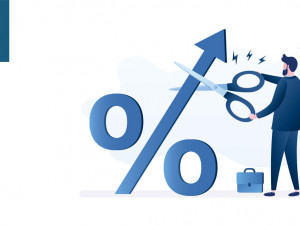
Truss creating even wider divisions
Morning mid-market rates – The majors
10th October: Highlights
- Growth for the few is not growth
- Employment market is still hot
- Energy crisis is Government’s responsibility according to ECB
GBP – Relationship between Treasury, BoE and the City fractured
It says that Britain is as close to a general strike than at any time for the past fifty years as Government policies drive militancy to a level not seen since the early seventies.
Workers in more sectors of the economy are seeing offers of pay rises fall short of their expectations.
Liz Truss has been criticized for trying to blind side workers who are seeing real wages decline and those on benefits threaten with the largest decline ever in the real level of what they receive with the reduction of the level of the energy cap.
The cap on energy bills is now set at £2,500 annually for the average household. This is a substantial increase from the average of £1,900 seen prior to October 1st.
The Chancellor has also been accused of saying that his policies on growth are the only way in which the economy can avoid a deep and damaging recession and continued high inflation, although it has been shown that cutting taxes to fund Government spending increases inflation.
It is difficult to argue that the pace of the rise in inflation has caught Ministers by surprise when the support that was offered was clearly going to drive demand significantly higher.
This is where the Bank of England has also fallen. Yes, it started increasing interest rates earlier than other G7 Central Banks, but its almost apologetic stance has shown Andrew Bailey to be weak and indecisive.
Its drip feed of twenty-five basis point increases that have taken place over the past five meetings, with a fifteen-point increase to set things off last December, have barely scratched the surface of rising prices.
Short-term interest rates have not even reached the point of being restrictive, and yet the data for output and productivity continues to weaken, driving fears that the economy is headed for a period of stagflation.
The Trades Union Congress will follow on 18-20 October to wrap up the Conference Season that has been an unmitigated disaster for the Conservative Party.
The TUC will be the most militant in decades, with unions finding their voice again after a period of low interest rates and low inflation.
Last week, Sterling tried to rally above the 1.15 level against the dollar, but investors remain unconvinced by the government, and traders are still looking for levels to short the pound.
It climbed to 1.1495, but new the setting up of new short positions drove it back to close at 1.1078
Recommend our services and earn up to £75 per successful referral
USD – Is it a pause for breath or the effect of the tightening?
The economy added 263k new jobs last month. This was above expectations but below the level seen in August, and left traders scratching their heads over the Fed’s intentions for its meeting on 2nd November.
The report encouraged hawks and doves equally. Those with more hawkish intentions saw a report in which more than a quarter of a million jobs were created.
This points to a continuation of significant job creation means that the market is still hot, while doves can point at the fact that the rise in new jobs was lower than last month and means that the tightening of monetary policy into restrictive territory is having an effect.
Both sides of the argument are valid and would each benefit from one more month’s datum.
The signal that the Fed sends out at that meeting will be crucial for the markets. All three outcomes that are possible will have their supporters. The FOMC could do nothing but with inflation still uncomfortably high, that is the least likely decision and the most damaging to the continued inflationary spiral.
They could hike by either twenty-five or fifty basis points. Each would be considered a dovish hike, which could send out the wrong message of their intentions, or that could continue with seventy-five basis points, making it four in a row.
This would mean that rates have gone up by three percent over four meetings and are well and truly in restrictive territory. It would mean that should the economy deteriorate significantly into the first quarter; the Central Bank would be faced with making an emergency cut in rates despite inflation still not being under control that would bring uncertainty and confusion to the markets.
The comments from FOMC members that are seen over the next couple of weeks likely be very carefully worded so as not to influence the markets.
The minutes of the latest meeting will be released on Wednesday. They will show just how hawkish members still are, but will also confirm that the Fed will be driven by data. This is unlikely to provide the market with any great comfort.
This week both CPI and PPI data will be released. CPI will show how inflation fared last month, while PPI will show here it is headed in the coming months,
Last week, the dollar index reached a high of 112.88, but was unable to catch a wave of momentum. It closed at 112.74.
EUR – Raising rates won’t bring the cost of energy down
The root of the rise in inflation is the continuing conflict in Ukraine. It may be uncomfortable for the European Union, but they expected Russia to achieve its goals in the country by now. They clearly didn’t bargain for the tenacity and spirit of the Ukrainian Government and its army.
The disruption of the supply of basic foodstuffs together with Russian interference with energy supplies has created an inflationary bubble in the Eurozone which shows little sign of receding.
Should the ECB therefore desist from hiking interest rates since their actions are having little success. That is the question being asked by Central Bankers and Finance Ministers from countries with weak and recovering economies.
The counterargument is that despite the outside influences on the economy, the level of support that was poured into the Eurozone economy during the Pandemic is still driving up demand, so interest rate hikes are still a valuable tool.
A signal that tighter monetary policies are beginning to have an effect is the slowdown in domestic property markets across the entire region. This is a mark of the cross-over between monetary and fiscal policies and affects most domestic markets.
Within the Eurozone the principle of homeownership is less developed in some countries than others, where house prices fall quite quickly in a rising rate environment, rental values, particularly in the commercial sector, taking longer to react.
This week is a quiet week for economic data across the entire European Union, although Central Bankers are expected to join the argument about what action the ECB should take.
France, which has remained neutral recently, neither facing the ravages of far higher inflation like Germany or the economic slowdown of Italy, is beginning to feel both over the past month or so. Its economy is slowing at a rapid rate, and the Banque de France is expected to add its voice to calls for caution to the ECB.
Last week the euro again tried to breach parity versus the dollar, and again it failed. It fell back to a low of 0.9726 and closed at 0.9745
Alan Hill
Alan has been involved in the FX market for more than 25 years and brings a wealth of experience to his content. His knowledge has been gained while trading through some of the most volatile periods of recent history. His commentary relies on an understanding of past events and how they will affect future market performance.



